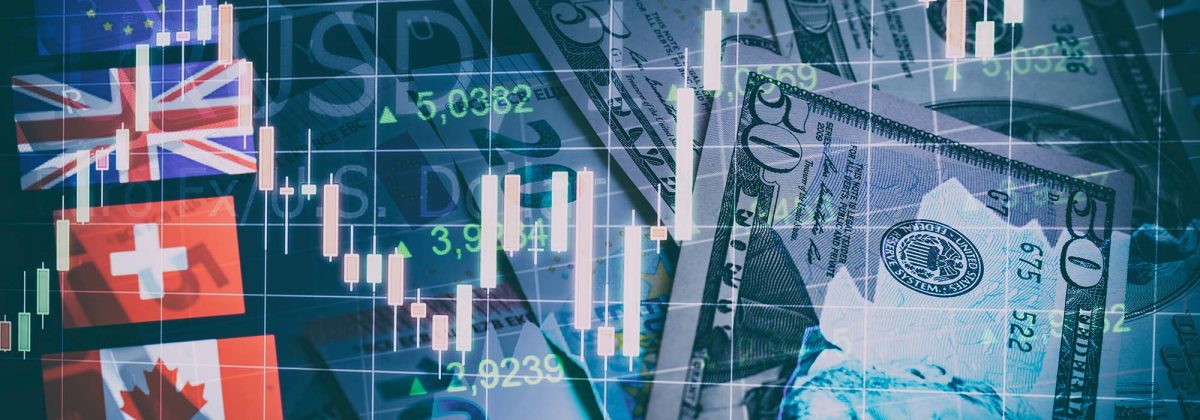Lesser Known Terms in Forex Trading

Traders come across plenty of jargon in the forex market. While some of these terms are frequently used in daily market activities, there are those known only to the most advanced traders. Then, there are terms that are better known through their ‘not so complex’ synonyms. Let’s take a look at some of the lesser known terms, which forex traders might encounter during their trading journey. After all, knowledge is vital to making informed trading decisions.
1. At Best
This is a term of instruction, given by a forex trader to a broker or dealer. Here, the broker is instructed to execute the trade at the best possible market price at the given time. Brokers may execute trades based on a variety of qualifications included in instructions. Traders need to become familiar with various instructions to make the right decisions. For instance, the “at best” is different from the phrase “at or better.” The “at or better” instruction means that the broker should buy or sell either at a specified rate or at a better rate, if they can get it in the market, for a specific time period.
2. Buck
In the age of Native Americans and colonists, buck (deer) skins were often traded for goods. At some point in history, the word “buck” came to be associated with the value of $1. Today, it is market slang for the US Dollar exchange rate, against other currencies. Some traders also refer to it as one million units of a dollar-based currency pair, like the EUR/USD or GBP/USD, or for the US Dollar itself.
3. Fill or Kill
Fill or Kill (FOK) is an order, which says that if the order is not filled in its entirety, then it should be cancelled altogether. Normally, the broker is given the instruction to immediately execute the order at the specified price, within a few seconds, entirely or not at all. This is frequently used by active traders, who deal in large quantity orders.
4. Covered Call
Covered Call is a term used frequently in derivatives trading. It is an options trading strategy, where a trader holds a long position in a currency and sells call options in the same currency, to try and generate extra revenue. For instance, if a trader has a long position in a particular currency that shows stability in ranging market conditions, and proceeds to sell the option at a strike price above the present value, there could be a chance of additional gain through the premiums.
5. FIFO
FIFO or “First-in-First-Out” is a term known in supply chains and production management. In forex trading, a broker could use this rule to decide on the order in which they close positions for traders. All positions opened for a particular currency pair are executed in the order they were opened in.
6. Flat Reading or Flat
Forex traders need to study the economic data related to a country, to predict the rise and fall of the domestic currency’s value. Before any major data release, there is a market consensus or forecast regarding the value of the upcoming indicator. If the economic data readings remain unchanged from the previous release, it is called a flat reading.
A “flat” can also be used as slang for a position that has been created and executed at the same price level. These neutral positions are also known as “square.”
7. Gearing
Gearing is another term for the leverage percentage. Leverage allows a trader to get into much larger positions than the amount they hold in their trading account. Leverage is denoted as a fraction or percentage. While leverage can help magnify gains if the market remains favourable, it also increases the loss potential in unfavourable markets, due to the increased exposure it offers.
8. Grid Trading
Grid trading is similar to the scalping strategy. It is based on taking advantage of the normal price volatility of a currency pair, by placing buy and sell orders at frequent intervals, above and below a set price level. For instance, a trader could plan sell orders every 10 pips below a set price level, and then put buy orders every 10 pips above the set price level. On the chart, this appears like a grid placed over the trading range.
This strategy could be quite useful in trending or ranging markets. Stop losses need to be set, however, to limit losses.
9. Handle
The whole number part of a price quote is often called the “handle.” In forex trading, the handle may refer to the common part of the price quote in both the bid and ask rate of the currency pair. For instance, if the bid/ask rate of the EUR/USD pair is 1.1183/1.1185, the handle for this quote is 1.11. Since many forex pairs are quoted in up to 5 decimal places, traders might find it easier to quote the last two places after the decimal, when discussing bids and asks.
10. Liquidation Level
Liquidation levels are levels set by forex brokers. They denote the level at which the outstanding orders in a trader’s account start being automatically liquidated. This level is pre-determined by the amount of initial and maintenance deposit put by a trader in their account and is expressed as a percentage. Forex traders frequently use leverage to place trades. Liquidation levels help reduce the risk for traders, while also controlling the liquidity risk for brokers.
It is usually known as a “margin call.” Certain regulatory bodies, like the UK Financial Conduct Authority (FCA), have issued guidelines that require brokers to close positions when the account balance reaches a particular level.
These were some of the lesser known terms used in the vast forex market. As a trader progresses in terms of skill and experience, they will come to know and understand many more. The financial markets are constantly evolving, and so is the market lingo.
Reference Links
- https://www.investopedia.com/terms/f/fok.asp
- https://www.investopedia.com/terms/b/buck.asp
- https://www.investopedia.com/terms/g/grid-trading.asp
- https://www.investopedia.com/terms/h/handle.asp







